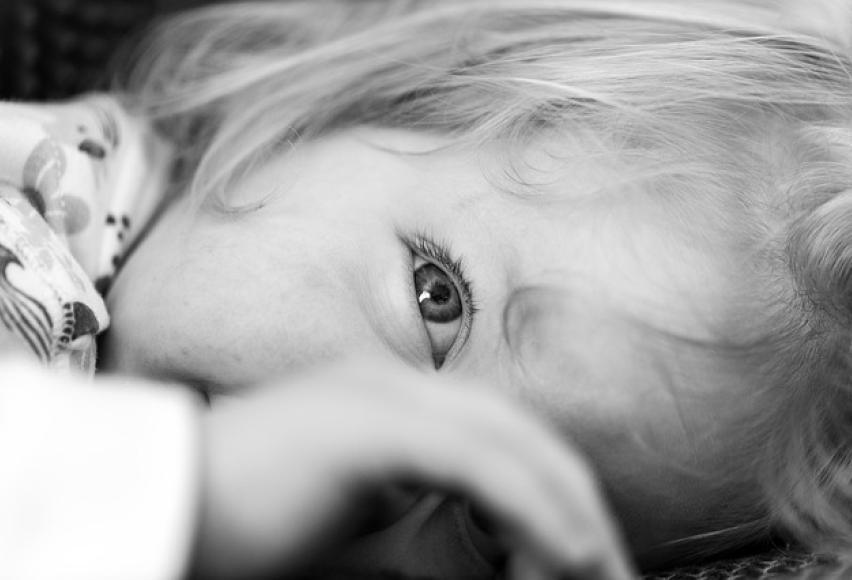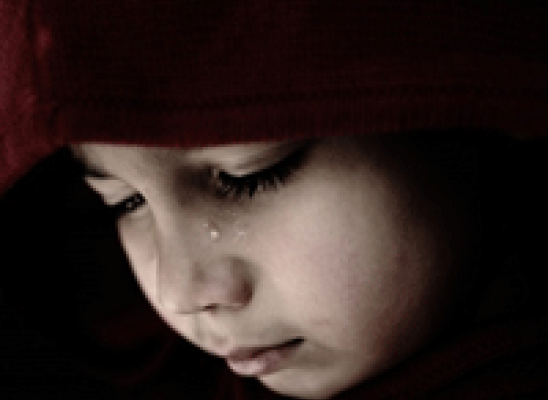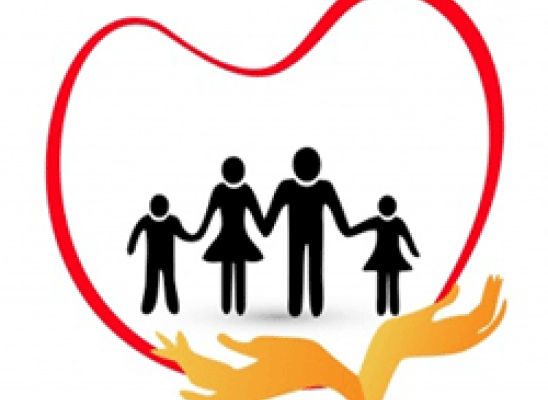Psychodermatology And Hair-Pulling In Children

Online test
Find out the severity of your symptoms with this free online test
 While trichotillomania (TTM) can occur at any age, the onset is most often seen in children ages 10-13, and more common among females. Some studies suggest that it’s not uncommon to seek out a dermatologist for treatment. After all, trichotillomania and skin picking present with distinct dermatological issues. But, these disorders also have distinct psychological underpinnings that perpetuate the behavior that creates skin and hair issues. Other studies suggest that people tend to seek out mental health support. Determining who to see and when isn’t always clear. So, the logical question one might ask is, “Do I need a psychiatrist or a dermatologist?” When it comes to body-focused repetitive behaviors (BFRBs) and some other skin disorders, the answer seems to be both.
While trichotillomania (TTM) can occur at any age, the onset is most often seen in children ages 10-13, and more common among females. Some studies suggest that it’s not uncommon to seek out a dermatologist for treatment. After all, trichotillomania and skin picking present with distinct dermatological issues. But, these disorders also have distinct psychological underpinnings that perpetuate the behavior that creates skin and hair issues. Other studies suggest that people tend to seek out mental health support. Determining who to see and when isn’t always clear. So, the logical question one might ask is, “Do I need a psychiatrist or a dermatologist?” When it comes to body-focused repetitive behaviors (BFRBs) and some other skin disorders, the answer seems to be both.
Despite the early age of onset for TTM, research for pediatric TTM has been limited. A 2020 study further examined the clinical characteristics of TTM in children and how dermatology and mental health approach treatment. What they found has significant implications for treating hair pulling in children.
The Study
Using a retrospective review of clinical records at a children’s hospital, the study found that about 65% of the 137 patients who sought treatment for TTM were female. What was surprising was that the average patient age was 8 which is much younger than what has been reported in other studies.
Sixty-two percent of patients had a comorbid psychiatric disorder, most often ADHD or generalized anxiety. There was also a significant family history of psychiatric disorders and skin disorders. About a third had a skin disorder. About 25% of patients seeking treatment for TTM were treated by a dermatologist. About 64% who were seeking treatment were seen by behavioral health clinicians.
Interestingly, those patients who were seeking treatment for “hair loss” tended to be seen by dermatologists while those seeking help for “hair-pulling” were most often seen by behavioral health. The researchers note that this was not unexpected as pediatric dermatologists often treat hair loss. They suggest that parents may not be aware of compulsive hair pulling and instead seek help for what seems to be hair loss.
The most common area for hair-pulling was the scalp, followed by the eyebrows and lashes. One finding was unexpected and relevant for medical monitoring. There were 17 trichophagia (eating hair) cases which is significantly higher than that reported in other studies. Three of the patients had were found to have trichobezoars.
What was most striking was the difference in treatment approaches between dermatologists and behavioral health clinicians. Dermatologists were more likely to prescribe patient education and medication to treat hair loss such as selenium sulfide shampoo, minoxidil, or fluocinonide ointment. This finding is significant because there are currently no medications specifically for the treatment of TTM. Behavioral therapy or counseling was not prescribed as often.
Not surprisingly, behavioral health clinicians most often recommended behavioral therapy. The medication was not generally recommended by the behavioral health clinicians (4.6%). When it was recommended, it was generally psychotropic medication such as atomoxetine, guanfacine, lisdexamfetamine or fluoxetine.
Most families opted to participate in behavioral therapy and education. Most chose not to pursue medication.
This study is important because it points to the complex relationship between the medical and psychiatric dimensions of TTM. Dermatologists might view it through a dermatology lens while behavioral health clinicians view it through a psychiatric lens yet there is a clear need for them to work in tandem. This need has begun to garner attention and a new approach known as psychodermatology has emerged.
The Rise of Psychodermatology
It’s estimated that 30-40% of dermatology patients also have a psychiatric issue. Dermatologists are not always well-versed in psychiatric disorders and their treatment. Dermatologists have recognized the need for and benefit of psychiatric consultation with certain skin disorders. Psychiatrists and other mental health clinicians have recognized the need for dermatologic intervention for patients with skin disorders. Recognizing the mind-body connection at play with these disorders has given rise to a unique sub-specialty of dermatology known as psychodermatology.
Certain disorders, like TTM, impact the mind-skin connection, sometimes referred to as the neuro-immuno-cutaneous system (NICS). These mind-skin disorders, sometimes referred to as psychodermatologic or psychocutaneous disorders, affect the person in different ways both psychiatrically and dermatologically. They are categorized based on these differences and differences in the way they might be treated.
Psychophysiologic Disorders
With these disorders, psychiatric factors play a pivotal role in the onset and course of the skin condition. The skin condition isn’t caused by psychological stress but can be triggered or exacerbated by it. Examples of psychophysiologic disorders include psoriasis, eczema, atopic dermatitis, and urticaria (hives).
Psychiatric Disorders With Dermatologic Symptoms
These disorders are psychiatric conditions that often present with self-induced skin issues such as excoriation, hair pulling, or other conditions of the skin. What makes these disorders especially complex is that they often occur as part of a somatoform disorder, anxiety disorder, factitious disorder, impulse-control disorder, or eating disorder. What appears to be a skin issue, like hair loss, for example, may in fact be a psychiatric disorder like hair pulling or TTM. Two seemingly same but very different reasons for hair loss require different approaches. Examples of these disorders include trichotillomania, skin picking disorder (sometimes referred to as pathological skin picking to differentiate from other forms of excoriation), delusions of parasitosis, obsessive-compulsive disorders, and eating disorders.
Secondary Psychiatric Disorders
These disorders are associated with disfiguring skin disorders that create intense emotional distress. They may not be “life-threatening” but can create a sense of despair that one’s life is “ruined”. Depression, anxiety, poor body image, and impaired social relationships are common experiences. Examples include severe psoriasis, chronic eczema, alopecia, vitiligo, rhinophymas, severe acne, and other cosmetically disfiguring conditions.
This specialty brings together the expertise of both psychiatry and dermatology to treat disorders that have both dermatologic and psychiatric connections. Psychiatry focuses more on the “internal” aspects of the disorder while dermatology focuses more on the visible skin result of the disorder.
What This Means For Treating Hair Pulling in Children
Findings from the 2020 study have significant implications for the treatment of TTM in children. TTM has both physical and emotional impacts on even the youngest patients. Early diagnosis and intervention can help to effectively manage the disorder.
Awareness and education for both parents and for clinicians are critical. Pediatric dermatologists often see young patients for hair loss. A significant number of their patients are likely to have psychiatric issues as well. Children are not always accurate historians or may be apprehensive in talking about their hair pulling. How parents view and describe the loss of hair (hair loss vs. hair pulling) seems to have a significant impact on who the child will see for care, their diagnosis, and treatment recommendations. Differentiating between hair loss and hair pulling is critical to accurate diagnosis and treatment. Patient education can help shed light on what might be happening with their child and give the clinician clues as to what might be happening.
The findings of the study also speak to the need to be aware of the medical implications of hair-pulling. The incidence of trichophagia was much higher than expected. Trichophagia can cause serious gastrointestinal issues and in severe cases, death. The authors suggest that families with children with TTM and trichophagia be made aware of the signs of possible distress. Clinicians involved in the care of a child should also remain vigilant for signs of distress related to trichophagia.
It’s encouraging that families in the study most often opted for therapy. Currently, the first-line treatment for TTM is a form of psychotherapy known as Habit Reversal Therapy. Habit Reversal Therapy has been shown to be effective in reducing pulling and associated behaviors by as much as 75%.
Clinicians can facilitate early intervention by gaining awareness of TTM and similar disorders, recognizing that it may not be an “either/or” but a “both/and” disorder. TTM is a psychiatric disorder but there may be occasions when a TTM patient requires the care of a dermatologist as well. Dermatologists may be the initial point of contact for a TTM patient who may not initially present as for “hair-pulling” and may also require therapy and psychiatric care. Dermatologists may not be familiar or comfortable with making a psychiatric diagnosis or with behavioral approaches to treating hair pulling. Behavioral health clinicians are not trained in dermatology. Being able to consult across disciplines can help to facilitate a holistic, effective treatment plan.
Psychodermatology is redefining dermatological treatment for TTM. It is creating an approach to care that is holistic and cognizant of the connection between the mind and the skin. It is allowing dermatologists to better understand, assess and treat even their littlest patients with confidence and support from behavioral health.
References
- Ricketts, E. J., Snorrason, I., Kircanski, K., Alexander, J. R., Stiede, J. T., Thamrin, H., Flessner, C. A., Franklin, M. E., Keuthen, N. J., Walther, M. R., Piacentini, J., Stein, D. J., & Woods, D. W. (2019). A latent profile analysis of age of onset in trichotillomania. Annals of clinical psychiatry : official journal of the American Academy of Clinical Psychiatrists, 31(3), 169–178. https://pubmed.ncbi.nlm.nih.gov/31369656/
- Henkel, E. D., Jaquez, S. D., & Diaz, L. Z. (2019). Pediatric trichotillomania: Review of management. Pediatric Dermatology, 36(6), 803-807. https://doi.org/10.1111/pde.13954
- Woods, D. W., Flessner, C. A., Franklin, M. E., Keuthen, N. J., Goodwin, R. D., & Stein, D. J. (2006). The trichotillomania impact project (TIP). The Journal of Clinical Psychiatry, 67(12), 1877-1888. doi:10.4088/jcp.v67n1207
- Rangu, S., & Castelo-Soccio, L. (2020). Trichotillomania in children and the different approaches between dermatological and behavioral health professionals at an urban tertiary care center. Skin Appendage Disorders, 7(1), 1-7. doi:10.1159/000510524
- Yadav, Savita & Narang, Tarun & Kumaran, Muthu Sendhil. (2013). Psychodermatology: A comprehensive review. Indian journal of dermatology, venereology and leprology. 79. 176-92. https://www.researchgate.net/deref/http%3A%2F%2Fdx.doi.org%2F10.4103%2F0378-6323.107632
- Lebwohl, J. K. (2001, December 1). Psychodermatology: The mind and skin connection. Retrieved from https://www.aafp.org/afp/2001/1201/p1873.html
7. Landuyt, G., Dierckx, B., de Nijs, P. F., & Dieleman, G. C. (2016). Behandelopties bij pediatrische trichotillomanie [Treatment options for paediatric trichotillomania]. Tijdschrift voor psychiatrie, 58(6), 463–470. https://pubmed.ncbi.nlm.nih.gov/27320510/
Online test
Find out the severity of your symptoms with this free online test
Start your journey with TrichStop
Take control of your life and find freedom from hair pulling through professional therapy and evidence-based behavioral techniques.
Start Now



